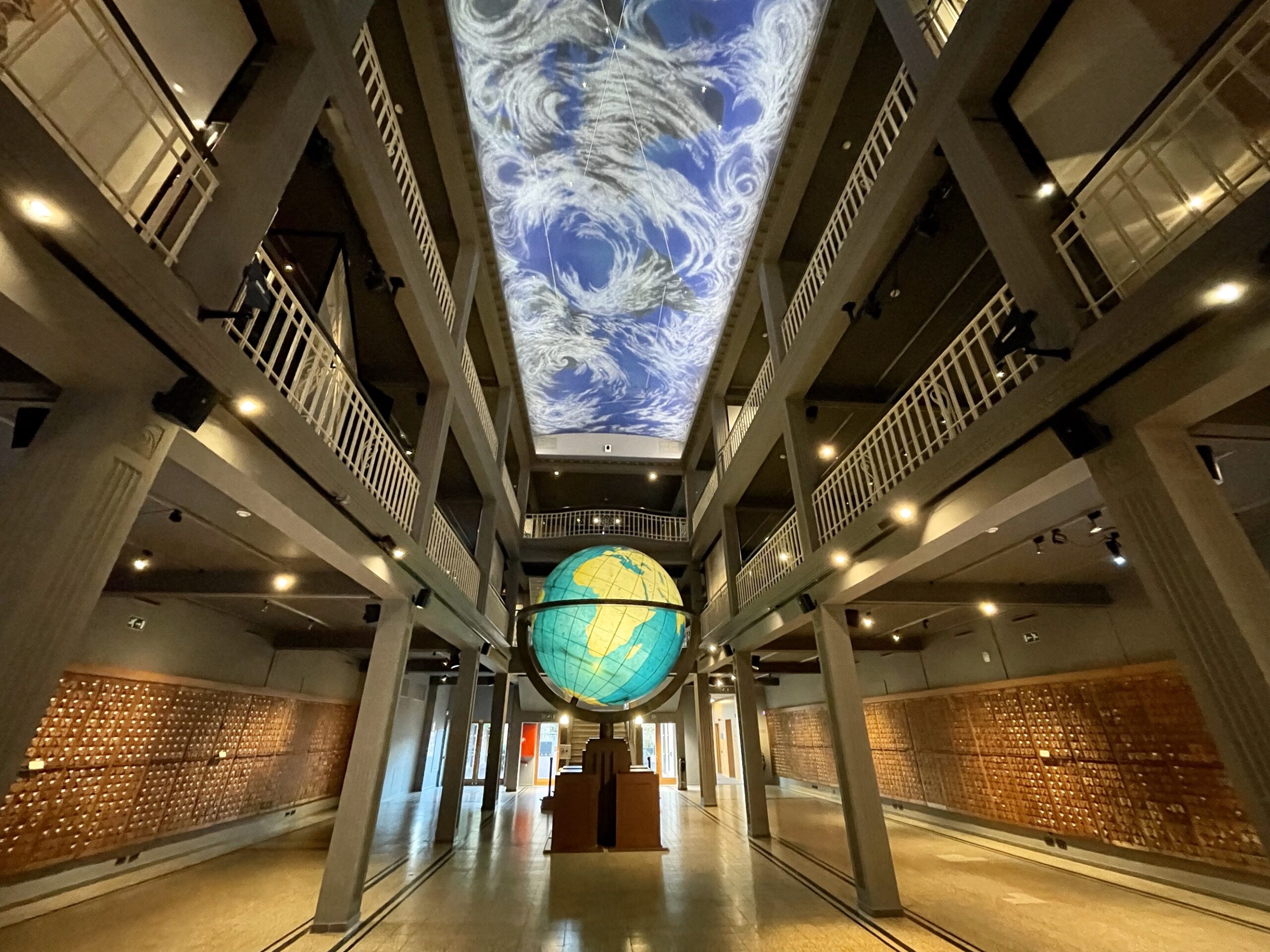The Mundaneum archive centre and museum in Mons may look like an ancient filing system with aged index cards, but it can also claim to be the progenitor of today’s Internet.
It contains an estimated 18 million bibliographic files and six continuous kilometres of archives from the late 19th century up to World War II thanks to two men from Brussels who attempted to document all of the world’s knowledge in publications. The collection of bibliographic index cards, known as the Universal Bibliographic Repertory (UBR), was added to UNESCO’s Memory of the World Register in 2013.
While the drawers with the cards stay closed – the cards refer to books that no longer exist – their value lies in their heritage. The centre preserves the archives and maintains the founding Mundaneum’s principle of “sharing knowledge with a view to universal peace,” according to Director Aurélie Montignie. To this end, the museum organises exhibitions that tackle current issues as “a space for reflection.”
In 2016, the Mundaneum was the first site in Belgium to be awarded a European Heritage Label by the European Commission for its contribution to continental history and culture. It is a testament to intellectual curiosity, information management and the never-ending quest for knowledge.
It is comprised of two buildings: an Art Deco former cooperative store with the UBR on the ground floor and permanent and temporary exhibitions above; and an archive centre in a former bakery behind the museum with a basement stuffed with publication and iconographic archives (accessible only to researchers by appointment).
The permanent exhibition is about the Mundaneum’s founders and creation. Annual temporary exhibitions relate to broad topics, such as feminism, pacifism, democracy and human rights, and the current one, called #Fake Images: Unmask the Dangers of Stereotypes, running until the end of December, explores antisemitism and propaganda. “The sharing of knowledge, this quest for universal peace, it's more topical than ever,” says Montignie.
The origins of the Mundaneum lie in the late 1800s. Belgian lawyers and bibliographers Paul Otlet (1868-1944) and Henri La Fontaine (1854-1943, a later Nobel Peace Prize laureate) tried to bring together and index all publications around the world on every subject – an estimated 10 million at that time. In 1895, Otlet and La Fontaine founded the International Office of Bibliography to create the UBR as a global network for cooperation among libraries.

The Mundaneum's files
The duo indexed materials with the Universal Decimal Classification (UDC), a bibliographic and library classification system invented by Otlet in 1905, long before the development of the Internet and World Wide Web in the 1980s. The UDC was applied to 125mm-by-75mm perforated index cards for the UBR, which later became the global standard for bibliographic indexing, still in use today. The meticulously categorised, cross-referenced and stored cards were effectively the paper version of a search engine.
The unfinished utopia
Otlet and La Fontaine designed the Mundaneum in 1910 as the hub of a large architectural project, a utopian dream called the World City that never came to fruition. Still, by 1912, they had set up an International Museum in the Cinquantenaire in Brussels as a visual encyclopaedia presenting the sum of human knowledge.
The First World War stalled the project but in 1920, with Belgian government support, the museum expanded to 100 rooms, centralising Otlet and La Fontaine’s collections of knowledge under the name Palais Mondial-Mundaneum. “They created a great museum to explain this knowledge to as many people as possible,” says Montignie. “They also dreamed of creating a World City, an idea that still inspires us to ask ourselves what we can do today to build a better world tomorrow.”
The Belgian government abruptly closed the Mundaneum in 1934, but Otlet continued to collect and index publications in his home near Avenue Louise (the Hôtel Otlet, designed by the architect Octave van Rysselberghe, is now considered an Art Nouveau gem).
German soldiers took over the Cinquantenaire in 1941, transferring the collections to a building in Leopold Park. Many documents were destroyed, lost or confiscated by occupying forces (most were later recovered by a special American unit). After Otlet died in 1944, what was left survived only because of successors who were close collaborators.
“It didn't work in the end, but it paved the way for a lot of things,” says Montignie. “The world of documentation or information as we know it today might not have been the same if it hadn't existed.”

The Mundaneum's exterior
The City of Brussels took over the building where the Mundaneum items were stored in the 1970s, transferring them to various unsuitable locations, including an underground parking lot at Place Rogier. Over time, the mishandled archives became thinner and largely obsolete.
They were saved in 1984 when the Belgian French Community took over the surviving archive. And in the 1990s, Elio di Rupo, then Wallonia Minister of Education, (and now the Minister-President) repatriated it to Mons. In 1998, they finally settled into their current location: not just the UBR but 48,000 boxes of archives of personal papers of Otlet and La Fontaine.
By chance, Google set up a data centre in 2010 in Saint-Ghislain, about 10km from Mons. The tech giant “saw it as a sort of ancestor,” according to Gaétan Santarelli, Mundaneum director of communication, and has since contributed financially to Mundaneum projects, such as a book and exhibition called The Mundaneum: Machine for Thinking the World (2022).

